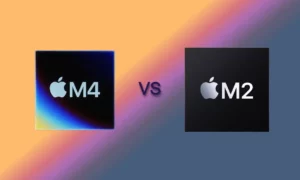Introduction
In the vast landscape of electronics, a technological revolution has been quietly unfolding, transforming the way we live, work, and communicate. At the heart of this revolution lies microelectronics – the science and technology of designing and manufacturing tiny electronic components and circuits.
In this blog post, we’ll embark on a journey to explore the intricacies, applications, significance, and the underlying workings of microelectronics in today’s fast-paced digital era.
Join Our WhatsApp News for updated information on semiconductors & AI
Understanding Microelectronics
At the foundation of modern electronics lies a fascinating realm known as microelectronics. Delving into the microscopic, this discipline involves the intricate design and fabrication of electronic components and circuits on a minuscule scale.
Let’s unravel the secrets of microelectronics and discover how its tiny wonders power the devices that shape our daily lives.
The Building Blocks: Semiconductor Materials
The magic of microelectronics begins with the fundamental building blocks – semiconductor materials. Predominantly silicon, these materials undergo precise manufacturing processes to transform into the tiny components that form the backbone of microelectronic circuits. Let’s explore the crystalline world that underpins the technology driving our digital age.
How Do They Work?
Before we delve deeper, let’s demystify the workings of microelectronics. At its core, microelectronics leverages the unique properties of semiconductor materials, particularly silicon. These semiconductors have a property known as the band gap, a range of energy levels that electrons can’t occupy. By carefully manipulating this band gap through processes like doping, engineers create components that can control the flow of electrons, forming the basis for electronic circuits.
Real-Life Example: Think of a simple transistor – a fundamental building block of microelectronics. In a transistor, the manipulation of the semiconductor material allows for the control of the flow of electrons. This simple yet powerful principle forms the basis for amplifying signals in your smartphone, regulating currents in your computer, and enabling countless other electronic functions.
Read More : Quiz on Semiconductor Process nodes – techovedas
Applications of Microelectronics
1. Integrated Circuits (ICs):
In the realm of microelectronics, integrated circuits, or microchips, reign supreme. These tiny marvels integrate thousands to billions of transistors onto a single chip, revolutionizing the landscape of electronic devices. Join us as we unravel the intricate world of ICs and their pervasive impact on modern technology.
Real-Life Example: Your smartphone is a testament to the power of integrated circuits. Packed with a multitude of functionalities, from processing data to connecting to the internet, it relies on sophisticated integrated circuits that enable seamless communication between different components.
2. Microprocessors:
At the heart of every computing device lies a microprocessor – a testament to the prowess of microelectronics. These silicon brains, with their ability to execute complex instructions at lightning speeds, have reshaped the computing landscape. Let’s delve into the heartbeat of computers and explore the transformative power of microprocessors.
Real-Life Example: The central processing unit (CPU) in your computer is a microprocessor. Its ability to execute instructions, perform calculations, and manage data is the reason your computer can run complex software, enabling everything from browsing the web to running sophisticated applications.
3. Memory Devices:
Microelectronics has bestowed upon us a myriad of memory devices, each playing a vital role in data storage and retrieval. From the rapid responsiveness of RAM to the enduring storage capabilities of Flash memory, join us on a journey through the diverse world of microelectronic memory devices.
Real-Life Example: The USB flash drive is a prime example of a microelectronic memory device. Its compact size belies its storage capacity, made possible by the integration of advanced memory technologies that store and retrieve data with remarkable speed and efficiency.
4. Microsensors and Actuators:
In the realm of microelectronics, size does not limit functionality. Tiny sensors and actuators, made possible by microelectronics, play pivotal roles in healthcare, automotive systems, and environmental monitoring. Let’s explore the miniature heroes shaping our interconnected world.
Real-Life Example: Accelerometers in your smartphone are microsensors that detect changes in velocity, enabling features like screen rotation. In the automotive industry, microactuators control various functions, such as adjusting mirrors or regulating engine components.
Read More: Top 10 Semiconductor Equipment Companies of 2023 – techovedas
5. Microcontrollers:
Embedded within everyday items, microcontrollers exemplify the pervasive influence of microelectronics. These compact devices provide control and automation capabilities, transforming mundane objects into intelligent, responsive entities. Join us as we uncover the role of microcontrollers in enhancing efficiency and functionality.
Real-Life Example: Your washing machine’s control system likely relies on a microcontroller. It manages the different stages of the washing process, regulates water temperature, and ensures the correct sequence of actions to provide a seamless laundry experience.
6. Communication Devices:
Microelectronics has fueled the evolution of communication devices, with smartphones standing as iconic examples. From the palm of your hand to the global network, these devices epitomize the impact of
microelectronics on modern society. Let’s traverse the pathways of connectivity shaped by these electronic wonders.
Real-Life Example: The smartphone in your pocket is a quintessential communication device powered by microelectronics. Its ability to connect to wireless networks, process data, and facilitate real-time communication is a testament to the integration of diverse microelectronic components.
Significance of Microelectronics
1. Miniaturization:
In the world of microelectronics, size matters – but smaller is better. The ability to miniaturize electronic components has revolutionized device design, fostering portability and convenience. Join us as we explore how the art of miniaturization has reshaped the way we interact with technology.
Real-Life Example: The evolution of laptops from bulky machines to sleek, lightweight devices exemplifies the impact of miniaturization in microelectronics. Smaller components enable powerful computing capabilities in a form factor that fits comfortably in a backpack.
2. Power Efficiency:
Efficiency is the hallmark of microelectronics. The energy-efficient design of microelectronic components contributes to reduced power consumption, aligning with the global push for sustainable technologies. Let’s unravel the significance of power efficiency in the age of microelectronics.
Real-Life Example: LED lighting is a prime example of power-efficient technology enabled by microelectronics. These small, energy-efficient light sources have replaced traditional bulbs in various applications, reducing energy consumption and environmental impact.
3. Advancements in Computing:
Microelectronics is the driving force behind the continuous evolution of computing capabilities. Advancements in processing speed and storage capacity have redefined the landscape of computing. Join us on a journey through the annals of computing history shaped by the relentless progress of microelectronics.
Real-Life Example: The development of quantum computers, leveraging the principles of quantum mechanics in microelectronics, holds the potential to revolutionize computing. These machines could solve complex problems at speeds unattainable by classical computers.
4. Innovation Across Industries:
The impact of microelectronics extends far beyond traditional boundaries, fostering innovation across diverse industries. From healthcare and transportation to entertainment, its influence permeates every facet of our lives. Let’s explore the transformative power of microelectronics in driving innovation and shaping the industries of tomorrow.
Real-Life Example: In healthcare, microelectronics contribute to the development of implantable devices, such as pacemakers and insulin pumps, enhancing patient care and quality of life. This intersection of technology and healthcare showcases the transformative potential of microelectronics.
5. Economic Impact:
Beyond technological marvels, microelectronics has become a major economic force. Driving innovation, creating jobs, and contributing to economic growth, the microelectronics industry is a linchpin in the global economy. Join us as we delve into the economic significance of microelectronics in the contemporary world.
Real-Life Example: Silicon Valley, synonymous with technological innovation, is a testament to the economic impact of the microelectronics industry. The concentration of leading technology companies and startups in this region has fueled economic growth and technological advancements on a global scale.
Challenges and Future Trends
1. Miniaturization Limits:
While the advantages of miniaturization are profound, it comes with its own set of challenges. As devices become smaller, new obstacles emerge, necessitating innovative solutions. Join us as we explore the limits and challenges associated with the relentless drive towards smaller, more powerful devices.
Real-Life Example: The development of nanoelectronics faces challenges related to heat dissipation and quantum effects. Engineers are exploring novel materials and cooling technologies to overcome these obstacles and push the boundaries of miniaturization.
2. Emerging Technologies:
The future of microelectronics holds promise with emerging technologies poised to redefine the landscape. Quantum computing, neuromorphic computing, and advancements in 2D materials are on the horizon, opening new possibilities. Join us on a speculative journey into the frontiers of microelectronics.
Real-Life Example: Quantum computers, leveraging the principles of quantum mechanics, could revolutionize fields such as cryptography, optimization, and drug discovery. Though in early stages, ongoing research and development hint at a future where quantum microelectronics transforms computational paradigms.
3. Integration with Other Technologies:
Microelectronics is not an isolated field; it converges with other cutting-edge technologies. This integration is unlocking unprecedented possibilities. Join us as we explore the interdisciplinary synergy shaping the future of microelectronics.
Real-Life Example: The integration of microelectronics with artificial intelligence is evident in applications such as autonomous vehicles. Microcontrollers and sensors work in harmony with AI algorithms to enable real-time decision-making, revolutionizing transportation.
Conclusion
In the grand tapestry of technology, microelectronics stands as a testament to the remarkable progress of human ingenuity. From the invention of the first transistor to the complex microprocessors of today, this field has continually pushed the boundaries of what is possible in the world of electronics. As we look towards the future, the impact of microelectronics will undoubtedly continue to shape the way we interact with technology, fostering innovation and transforming our collective experience in unprecedented ways. The tiny giants of microelectronics have, and will continue to, play a monumental role in shaping the future of our digital world. Join us in celebrating the marvels of microelectronics and the profound impact these tiny giants have on our interconnected, digital lives.



